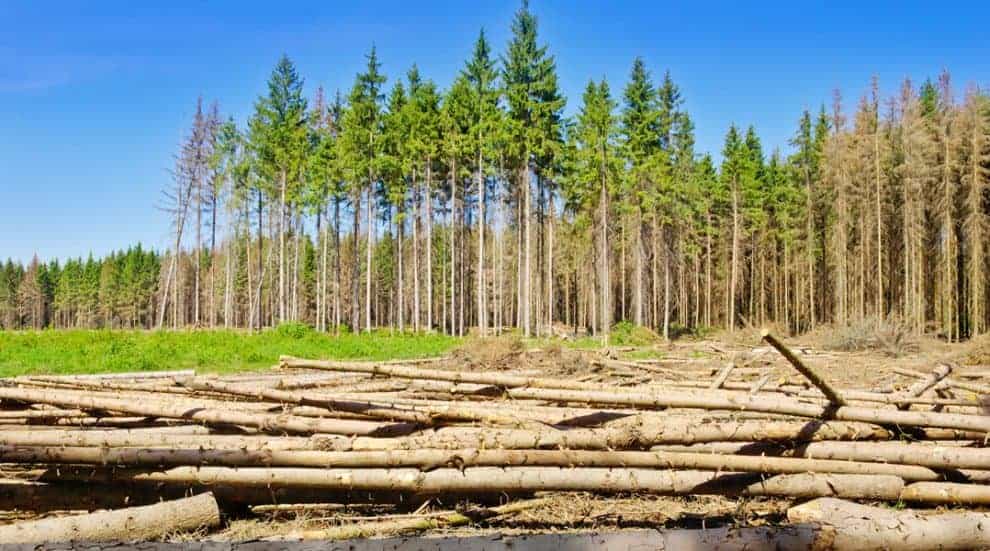Timberland investors rely on strong wood demand from mills located near their timberland properties to generate cash flows and drive returns. When updating our Forisk Forecast timber models for the United States, we review core drivers of wood demand by industry and region across the country.
Softwood Lumber
Three sources account for approximately 95% of the softwood lumber used in the United States: the U.S. South, the Pacific Northwest, and Canadian imports. Understanding which regions drive lumber volumes helps us account for structural changes in the market when forecasting timber prices. And projecting softwood lumber supplies requires a hard look at each of the core lumber sources.
A question-and-answer format helps summarize the most common issues along with our key findings:
- To what extent can Canada increase imports? (Short answer: in the short term, room exists to grow; in the long-term; the Mountain Pine Beetle has reshaped the sector).
- To what extent can the Pacific Northwest recapture U.S. market share? (Short answer: the Pacific Northwest has permanently ceded the yellow jersey to the South, but retains upside to fill the hole of a diminished Canadian sector.)
- How much could the U.S. South lumber sector grow relative to its historic peaks? (Short answer: once new and announced capital investments are in place, the South can exceed its historic peaks from 8-9 years ago.)
- Could the U.S. North become a dominant softwood lumber producing sector relative to the South and Northwest? (Short answer: no. Long answer: no.)
Pulp and Paper
The U.S. pulp and paper industry remains critical and powerful to timberland investors growing pulpwood. This industry consumes 80% of the pulpwood harvested in the United States, continues to attract investment capital, and maintains an “ability-to-pay” for wood raw material that, on a cash basis, can exceed that of OSB plants by 50% and that of pellet facilities by over 100%.
While total U.S. paper and paperboard production has declined since 1996, results vary across product categories as profitable sub-sectors continue to grow. We worked with Dr. Jack Lutz of the Forest Research Group to take a closer look at paper and paperboard markets. Our projections indicate that total U.S. paper use increases slightly over the next ten years. Paper production inches up as growth in paperboard and packaging offsets declines in newsprint and printing and writing paper.
Hardwood Logs
Timberland investments in the Lake States, Mid-Atlantic, Appalachia and New England often rely on hardwood log markets, rather than the softwood markets that generate returns in the South and Pacific Northwest. And hardwood markets show signs of life. For the first time since 2006, U.S. hardwood lumber consumption will likely exceed 10 billion board feet in 2014.
What drives demand for hardwood logs and lumber? The top three hardwood lumber consuming sectors are pallets and crating; export markets; and railroad ties. As of August 2014, all three sectors remain on pace to hit their highest volumes since at least 2005. According to Hardwood Review, home-related (residential) applications alone – including flooring, furniture, cabinets, etc. – account for nearly 30% of the U.S. total.
Projecting hardwood log prices has unique challenges as compared to markets for pine, Douglas fir or hemlock. For example, the use of differing log scales – such as Scribner, Doyle and International ¼ – remains persistent and common across local markets. Appraisers and investors typically report pricing in the local scale rather than convert to a common scale. In the end, hardwood log markets represent the ultimate in localized analysis for timberland investments.
This content may not be used or reproduced in any manner whatsoever, in part or in whole, without written permission of LANDTHINK. Use of this content without permission is a violation of federal copyright law. The articles, posts, comments, opinions and information provided by LANDTHINK are for informational and research purposes only and DOES NOT substitute or coincide with the advice of an attorney, accountant, real estate broker or any other licensed real estate professional. LANDTHINK strongly advises visitors and readers to seek their own professional guidance and advice related to buying, investing in or selling real estate.










Enjoy these articles and all info re: wood!! Thank You!
Judy Wood